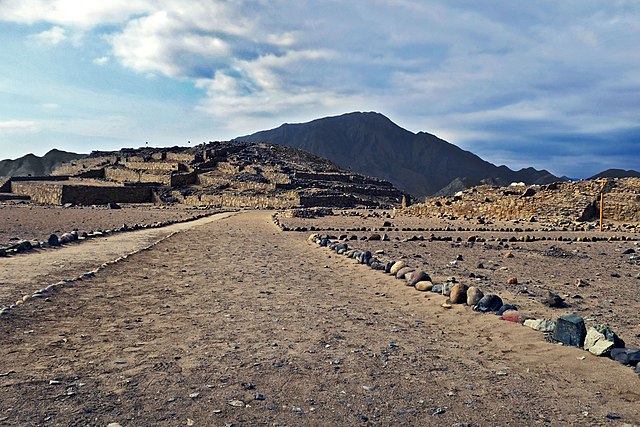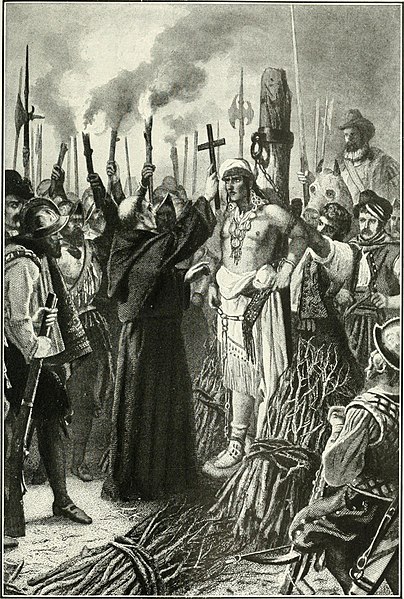The Chavín culture is an extinct, pre-Columbian civilization, developed in the northern Andean highlands of Peru around 900 BCE, ending around 250 BCE. It extended its influence to other civilizations along the Peruvian coast. The Chavín people were located in the Mosna Valley where the Mosna and Huachecsa rivers merge. This area is 3,150 metres (10,330 ft) above sea level and encompasses the quechua, suni, and puna life zones.
In the periodization of pre-Columbian Peru, the Chavín is the main culture of the Early Horizon period in highland Peru, characterized by the intensification of the religious cult, the appearance of ceramics closely related to the ceremonial centers, the improvement of agricultural techniques and the development of metallurgy and textiles.
Chavín Gold Crown Formative Epoch 1200-300 BCE Larco Museum Collection, Lima.
Incised Strombus-Shell Trumpet, 400-200 B.C.E, Brooklyn Museum. This shell trumpet was probably made for ceremonial use. The incised designs depict a person of high rank, indicated by his facial tattoos and ankle ornament, playing a shell trumpet. The figure is surrounded by snakes, including one that emanates from the instrument. The twisting and intertwined snakes may indicate the power of the trumpet to communicate with supernatural beings.
The Lanzón at Chavín, still image from a video of a photo-textured point cloud using 3D scanner data collected by nonprofit CyArk.
Chavín Feline-and-Cactus Stirrup Vessel, Horizon/Early Intermediate
Peru, officially the Republic of Peru, is a country in western South America. It is bordered in the north by Ecuador and Colombia, in the east by Brazil, in the southeast by Bolivia, in the south by Chile, and in the south and west by the Pacific Ocean. Peru is a megadiverse country with habitats ranging from the arid plains of the Pacific coastal region in the west to the peaks of the Andes mountains extending from the north to the southeast of the country to the tropical Amazon basin rainforest in the east with the Amazon River. Peru has a population of over 32 million, and its capital and largest city is Lima. At 1,285,216 km2, Peru is the 19th largest country in the world, and the third largest in South America.
Remains of a Caral/Norte Chico pyramid in the arid Supe Valley
Moche earrings depicting warriors, made of turquoise and gold (1–800 CE)
The citadel of Machu Picchu, an iconic symbol of pre-Columbian Peru
One of the main events in the conquest of Peru was the death of Atahualpa, the last Sapa Inca, executed by the Spaniards on 29 August 1533








